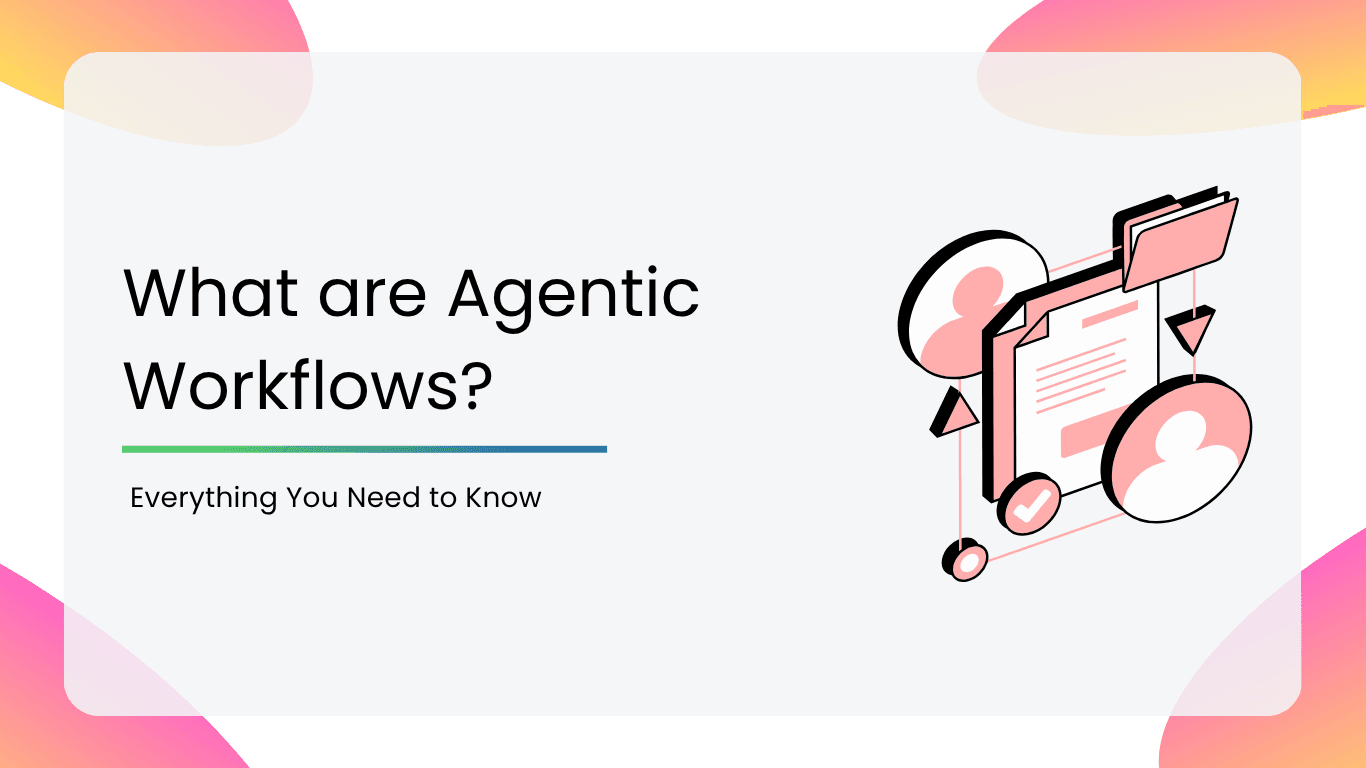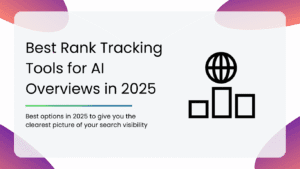Imagine a world where AI does not just follow your instructions, but also thinks, adapts, and executes tasks on its own, like a digital employee that learns from experience. This is how agentic workflows work, which is considered a revolutionary shift in AI automation.
From self-improving customer service bots to AI doctors analysing medical records, businesses today are rapidly adopting agentic workflows in order to cut costs, boost efficiency, and handle complex decision-making.
But how do they actually work? What is it that makes them different from traditional automation? And what are the risks, if any?
In this blog, we will break down everything that you need to know, right from core concepts to real-world use cases, so you can understand how agentic workflows are reshaping industries.
How Agentic Workflows Work
Agentic workflows function through a cycle that is intelligent and self-adaptive, which combines perception, reasoning, execution, and learning. This approach allows systems to operate autonomously, adapt to changing situations and improve over time.
1. Perception
In this first phase, the system gathers and processes information from various sources.
- Input Processing: The system collects data from multiple inputs such as text, databases, sensors and documents, all at the same time.
- Context Building: It then analyses the input data that is in relation to past interactions and historical patterns to build a situational context.
This phase gives the system awareness of its environment and the problem that it needs to solve.
2. Strategic Reasoning
After understanding the context, the system plans possible solutions using decision-making logic.
- Option Generation: The system creates several possible courses of action.
- Predictive Modeling: It simulates the outcome for each option using internal models to forecast the results.
- Decision Scoring: It assigns a confidence score to each option. This indicates the likelihood of success and selects the most optimal path.
This lets the system choose actions with high chances of success based on real-time analysis.
3. Multi-Tool Execution
Once a decision is made, the system performs actions using connected tools and platforms.
Action Types
- Data Retrieval: Using APIs or database queries
- Computation: Execution logic through scripts or functions.
- Communication: Sending messages through email, SMS, or even notifications.
- Physical Execution: Controlling hardware or devices, if required.
Each of these tasks is routed through the appropriate tool or system component. This enables seamless automation across multiple domains.
4. Continuous Learning
The system evaluates its performance and improves its processes through feedback loops.
- Reinforcement: Positive outcomes are reinforced, while errors are analysed for future improvement.
- Knowledge Updates: The system updates its internal models and the memory on a regular basis, in order to stay updated.
This learning mechanism ensures that the system becomes smarter and more efficient over time.
Components of Agentic Workflows
- AI Agents: AI agents are autonomous units that are designed to perform tasks intelligently. They are capable of observing their environment, making decisions, and executing actions with minimal human input. In agentic workflows, these agents often specialise in specific roles such as customer support, data analysis, etc., and they collaborate to complete complex workflows.
- Prompt Engineering: Prompt engineering involves designing effective inputs or prompts to guide LLMs like GPT-4. Prompts that are well-crafted help AI understand the task, interpret context, and generate accurate outputs. This component is crucial in controlling AI behaviour and in ensuring consistency in responses.
- Orchestration layer: This layer acts as the workflow coordinator, which manages agent actions, task sequencing, and system-wide logic. It ensures that all components, such as agents, tools, and memory, work together in harmony. Without orchestration, even intelligent agents become disjointed and inefficient.
- Memory and Context Storage: Memory enables long-term intelligence. It allows workflows to remember past actions, learn from outcomes, and deliver personalised, context-aware responses. This component ensures that the system doesn’t start from scratch every time. This boosts relevance and efficiency.
- Feedback and Learning Loop: The learning loop transforms an agentic system from automated to self-improving. It uses outcomes, errors, and user feedback to improve future decisions. This ongoing evolution is what gives agentic workflows their adaptability and long-term value.
Agentic Reasoning Design Patterns
1. Reflection & Self-Evaluation
Reflection is the process by which AI agents analyse their own past actions and decisions. They then identify what worked and what didn’t.
- How it works: After completing a task or decision, the agent revisits its reasoning chain and compares the predicted outcome with the actual result. During this, it may revise internal strategies or flag areas for learning.
2. Tool Use
In this pattern, agents invoke external tools such as databases, calculators or web services, in order to enhance or validate their reasoning.
- How it works: When the AI encounters a gap in its internal knowledge or needs precise computation or real-time data, it knows when and how to call the right tool and then uses the output to inform its next step.
3. Planning & Goal Decomposition
Planning refers to an agent’s ability to map out multi-step processes toward achieving a final goal by breaking them into sub-tasks that are manageable.
- How it works: The agent begins with a high-level objective, identifies all necessary actions, organises them in sequence or parallel, and then adapts the plan based on progress and feedback.
4. Multi-Agent Collaboration
This pattern allows multiple AI agents to coordinate, share information, and divide responsibilities to solve complex problems collaboratively.
- How it works: Each agent has a specialised role or function, e.g., data analyst, communicator, etc. They exchange context, delegate tasks, and synchronise decisions through shared memory or orchestration layers.
5. Chain-of-Thought Reasoning
This is a logical, step-by-step reasoning process where the agent breaks down complex tasks into intermediate thinking steps before arriving at an answer.
- How it works: Instead of jumping to conclusions, the agent writes out its reasoning path, simulating how a human would think out loud.
Benefits of Agentic Workflows
- Intelligent Decision-Making: Agentic workflows enable systems to analyse context, evaluate options, and choose the best course of action dynamically. This is going beyond fixed and rule-based automation.
- Continuous Self-Improvement: With feedback loops and reinforcement mechanisms, agentic systems can learn from past actions, refine their reasoning, and improve performance without manual updates.
- Human-Like Flexibility: They handle ambiguous or novel situations by reasoning through them. This is similar to how a human would approach a new task. This enables flexible and adaptable automation.
- Higher Efficiency & Throughput: By automating end-to-end decision-making and execution, agentic workflows significantly reduce human workload, cut down processing time, and boost overall productivity.
Limitations of Agentic Workflows
- High Initial Complexity: Designing, deploying, and maintaining agentic systems requires technical expertise, time, and planning, especially when it comes to integrating multiple tools and data sources.
- Data Dependency & Quality Issues: The quality and accuracy of an agent’s decisions heavily depend on the data it receives. Incomplete, outdated, or incorrect data can lead to reasoning that might be flawed.
- Ongoing Maintenance Needs: Agentic workflows are not “set it and forget it.” They require constant monitoring, feedback tuning, model updates, and alignment with evolving business rules.
- Cost & Resource Intensive: Building a robust agentic system might require significant investment in infrastructure, AI tools, skilled personnel, and continuous support.
- Integration Challenges: Legacy systems, unstructured data, and proprietary platforms can make the integration process difficult. This ends up limiting the workflow’s reach and functionality.
Real World Applications
1. Customer Service Automation
Agentic workflows enhance customer service by allowing AI agents to understand user intent, pull relevant data from support systems, and provide personalised, real-time solutions.
Use Cases:
- Resolving complex customer queries across chat, email, or voice.
- Escalating high-risk tickets based on emotional tone or urgency.
- Following up with feedback loops to improve future responses.
2. Insurance Claims Processing
In the insurance sector, agentic workflows are used to evaluate, validate, and settle claims with high efficiency and minimal human input.
Use Cases:
- Extracting data from claim documents using NLP.
- Verifying policy details and calculating payouts.
- Flagging suspicious claims for fraud detection.
3. E-commerce Order Management
Agentic systems help e-commerce businesses manage orders, logistics, and customer interactions through adaptive, multi-step automation.
Use Cases:
- Detecting and resolving order issues.
- Coordinating with inventory and delivery systems.
- Recommending products or offers based on purchase history.
4. Healthcare Administration & Support
Agentic workflows streamline administrative tasks in healthcare. This allows providers to focus more on patient care while the AI handles background operations.
Use Cases:
- Scheduling appointments based on real-time doctor availability.
- Extracting patient information from medical records.
- Sending automated follow-up care instructions or reminders.
5. Financial Services & Risk Analysis
In banking and finance, agentic workflows support faster, smarter decision-making for both customers and analysis.
Use Cases:
- Automating loan application review with credit checks and risk scoring.
- Monitoring transactions for compliance and fraud.
- Offering personalised financial advice based on customer profiles.
6. Recruitment & HR Operations
Agentic workflows assist HR departments by automating repetitive tasks and enhancing decision-making in talent acquisition and employee engagement.
Use Cases:
- Screening resumes based on role-fit and company culture.
- Scheduling interviews and collecting candidate feedback.
- Generating onboarding materials and tracking new hires.
7. Supply Chain & Logistics Management
Supply chains benefit from agentic systems that can adapt to disruptions, optimise routes, and improve delivery reliability.
Use Cases:
- Rerouting shipments in real time during delays.
- Forecasting demand based on seasonal and historical trends.
- Automating vendor communication and reporting.
8. Content Generation & Creative Workflows
Agentic workflows are now widely used in marketing and content teams for scalable, high-quality content production and campaign execution.
Use Cases:
- Generating blog outlines, emails, and social media posts.
- A/B testing landing page headlines and visuals.
- Managing multi-platform publishing with content scheduling agents.
Conclusion
In 2025, agentic workflows represent a new era of intelligent, adaptable systems. By combining reasoning, tool use, memory, and collaboration, these workflows can handle complex tasks with a level of insight that traditional systems simply can’t match.
Whether it’s streamlining customer service, accelerating operations, or enabling smarter decision-making, agentic workflows are helping businesses move faster and think deeper.
In a world where agility and intelligence are key, adopting agentic workflows isn’t just an upgrade, but a competitive advantage.
Check out other blogs for more such informative content:
- Creative AI Design Assistant Tools for Marketers
- Top AI Tools for Influencer Marketing
- AI Tools to Revolutionize Your Social Media Strategy
- Guide to Agentic AI
FAQs
Yes, but they require guardrails such as:
-Output validation
– Error-handling fallbacks
– Logging and traceability
– Prompt monitoring and model version control
LLMs are common in agentic workflows, especially for reasoning and language tasks, but not mandatory. Rule-based agents or traditional ML models can also be part of agentic workflows if paired with planning and tool-use logic.
Python is the most common due to strong AI/ML libraries and community support. JavaScript/Node.js can also be used, especially for front-end or API-related integrations.
It depends on complexity. A basic setup can be prototyped in a few hours. A production-grade workflow with memory, logging, and APIs might take days to weeks.





